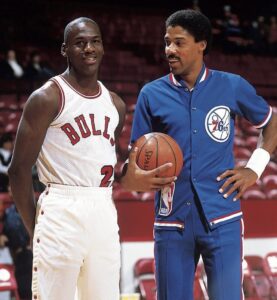“We Were Drug Addicts Dabbling in Music”: The Unraveling of Aerosmith’s Draw the Line
By the mid-1970s, Aerosmith had clawed their way to the pinnacle of American hard rock—louder, sweatier, and more combustible than nearly any band in existence. With the double-barreled triumph of Toys in the Attic (1975) and Rocks (1976), they were no longer just a Boston band with a Stones fetish—they were the band. But by the time recording began on 1977’s Draw the Line, the machinery of their success had begun to corrode from within. Too many nights, too many drugs, and too few boundaries had reduced the group to a gang of junkies flailing under the illusion of still being in control. As Joe Perry would later summarize with brutal clarity: “We were drug addicts dabbling in music, rather than musicians dabbling in drugs.”
This flow revisits the disintegration of Aerosmith during the making of Draw the Line, an album forged in self-destruction and sustained on delusion. It is a portrait of artistry undone by addiction, and of a band whose fame only magnified their unraveling.
The Crest Before the Crash
Coming off a hot streak of tours and radio dominance, Aerosmith entered 1977 flying high in every sense. The unexpected second-wave success of “Walk This Way” added rocket fuel to their global momentum, and their overseas performances—especially in Japan—drew comparisons to the Beatles in their feverish reception.
But behind the curtain, the group’s dynamic was shifting from brotherhood to battleground. Steven Tyler and Joe Perry—once an inseparable creative duo—had become co-dependent to a deadly degree. Their reliance on heroin, cocaine, quaaludes, and alcohol created an echo chamber of dysfunction. Meanwhile, the rest of the band—Brad Whitford, Tom Hamilton, and Joey Kramer—found themselves caught in a vortex of missed rehearsals, prolonged absences, and volatility.
Manager David Krebs, in a desperate attempt to protect the recording process from further deterioration, moved the band into The Cenacle, a former convent in Armonk, New York. It was a place chosen for its isolation. But isolation proved no antidote. As Tyler famously quipped, “Drugs can be imported, David… Dealers deliver.” The convent became a chaos bunker—part recording space, part narcotic labyrinth. Sports cars screamed through the property at dawn, weapons were fired recreationally, and days passed without instruments being touched.
A Record Made Through the Fog
Where Rocks had been recorded with laser intensity, Draw the Line was constructed in slow, hazy fragments. Producer Jack Douglas, who had previously helped steer the band toward sonic brilliance, was forced into the role of babysitter, therapist, and ghostwriter. Sessions began late—if at all—and the band’s signature swagger was displaced by exhaustion and paranoia.
Perry’s involvement was increasingly erratic. Often absent from the studio, he left Brad Whitford to fill in guitar parts. Tyler, meanwhile, became obsessed with increasingly obscure lyrical abstractions, drawing phrases from drug-induced visions, half-remembered folklore, and nonsense.
And yet, somehow, moments of brilliance surfaced:
- “Draw the Line”: The title track managed to capture a shred of the band’s former fire. Driven by Perry’s sludgy, hypnotic six-string bass riff, the song’s arrangement was gritty and immediate. Tyler’s lyrics—delirious and cryptic—read like transmissions from a collapsing psyche.
- “Kings and Queens”: A rare success from the Cenacle era, this medieval-themed ballad featured mandolin, banjo, and a surprisingly disciplined performance. It was recorded in the chapel, where the acoustics lent it a spectral gravity. Lyrically mythic and musically ornate, it showed what Aerosmith could still achieve when momentarily sobered by ambition.
- “Bright Light Fright”: Too raw for the rest of the band’s taste, this aggressive, proto-punk track was rejected outright. Joe Perry insisted on singing it himself—a rare solo outing that spoke volumes about the group’s fractured unity.
Douglas later remarked that the sessions devoured over six months and cost Columbia half a million dollars. The result? A record that sounded half-cooked, bloated in places, and unnervingly thin in others. Tyler would later confess, “I just didn’t care anymore.”
A Split Between Commerce and Collapse
Released in December 1977, Draw the Line arrived in a haze of anticipation. Fans hoped for another Rocks. Critics hoped for evolution. Instead, what they got was a document of decline. Rolling Stone deemed it “a truly horrendous record… chaotic to the point of malfunction.” Other reviews echoed the sentiment: bloated, unrefined, indulgent.
Yet commercially, the album soared. It became Columbia Records’ fastest-selling release to date, reaching No. 11 on Billboard. The discrepancy was jarring—Aerosmith’s reputation and the cultural momentum they’d built carried the album beyond the weight of its own flaws. To casual listeners, the familiar swagger was still faintly audible. But for longtime fans and insiders, the signs of decay were unmistakable.
The sonic inconsistencies, absent hooks, and frequent filler were not the symptoms of creative experimentation—they were the scars of addiction. Even its high points carried the tension of survival rather than joy. Perry would later call it “the beginning of the end… the decay of our artistry.”
Into the Abyss
If Draw the Line was the warning flare, the years that followed were the full inferno. The band plunged into a maelstrom of dysfunction and misfortune that seemed ripped from a cautionary Hollywood screenplay:
- In 1978, during the tumultuous sessions for Night in the Ruts, Perry finally walked. The rift between him and Tyler—personal, professional, and pharmaceutical—had grown irreparable.
- Whitford followed in 1981.
- 1982’s Rock in a Hard Place, recorded without either of the band’s key guitarists, flopped both commercially and critically. The loss of Perry and Whitford had severed the band’s sonic backbone.
Outside the studio, the chaos only deepened:
- Joey Kramer suffered a near-fatal crash in his Ferrari, slamming into a wall at 130 mph.
- Perry was involved in a high-speed accident in his Corvette, striking an unmarked police vehicle.
- Tyler collapsed mid-set at the Lorelei Festival in Germany, his body shutting down under the weight of chemical abuse.
- In a chilling near miss, the band had considered leasing the very same plane that later crashed with Lynyrd Skynyrd aboard. Fate, it seemed, was circling.
The 1980s opened with Aerosmith existing in name only—bloated, broken, and bankrupt. It wasn’t until 1984, lured once again by the promise of drugs and perhaps some faint echo of the magic they once had, that Perry and Tyler reunited. But the comeback would be long, painful, and anything but guaranteed.
Draw the Line: A Last Gasp Before Oblivion
In the annals of rock history, Draw the Line occupies a strange, haunted corridor. It is not the band’s worst album—but it may be its most tragic. Not because of what it was, but because of what it could have been. The album documents a moment when talent and toxicity were locked in a death spiral—when the stage outfits still glittered, but the men inside them were unraveling.
And yet, there is something undeniably compelling about Draw the Line. In its disjointed structures, manic energy, and drug-smeared lyrics, we hear the sound of a band trying desperately to outrun its own demise. There are no neat resolutions, only glimpses—of power, of melody, of ruin.
The album also holds an eerie mirror to the music industry of the 1970s: a place where excess was currency, where labels enabled breakdowns so long as they sold, and where survival was a matter of luck as much as will.
Epitaph of the ’70s Aerosmith
To revisit Draw the Line today is to listen to a band trying to hold together an empire built on powder and pride. Its songs bleed disillusionment. Its production is at war with itself. Its lyrics are sometimes unintelligible, sometimes brilliant. It is the sound of a band overdosing on itself.
As Joe Perry later reflected: “We stopped giving a fuck.” And for a time, the world very nearly stopped giving a fuck about them too.
But the story didn’t end there. Aerosmith clawed their way back, found sobriety, and made another run at the summit in the late ’80s. But Draw the Line remains the tombstone of their first life—cracked, scorched, but not entirely unreadable.
It drew the line, indeed. And nearly erased the band in the process.
No comments yet.








